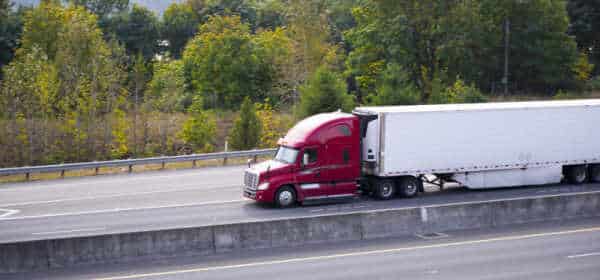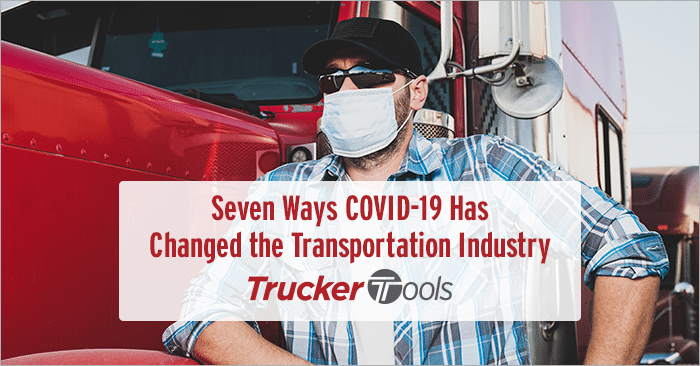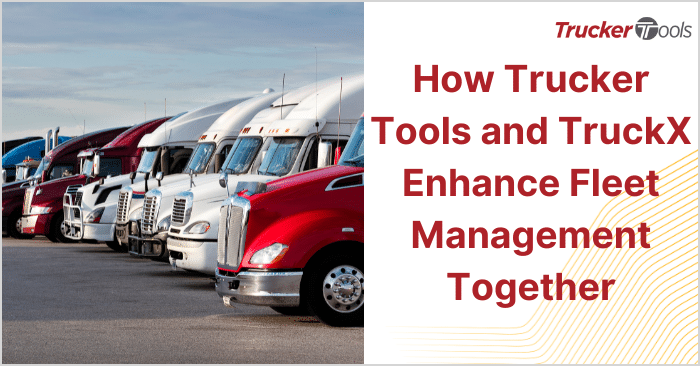It’s undeniable that the COVID-19 pandemic has impacted and continues to impact the transportation industry. Manufacturing disruptions, port congestion, worker shortages, border closures, lockdowns and new safety protocols all because of COVID-19 have reshaped freight lanes and fundamentally changed the daily operations of many freight brokers and logistics providers. Some of the biggest changes we’ve witnessed are around the use of technology.
“Often in uncertain economic environments, companies slow their technology investments to a trickle,” writes Sean Harapko in a report from Ernst & Young. “But during the COVID-19 pandemic, 92 percent did not halt technology investments. This speaks to the value of a digital supply chain in helping enterprises navigate disruptive forces and respond faster to volatile supply and demand.”
Check out these seven ways COVID-19 has changed the transportation industry.
1. More Teams Working Remotely
One of the first ways that COVID-19 changed the transportation industry was that it made remote work more common. In the early days of the pandemic when we didn’t have vaccines available and little was known about the Coronavirus, many freight brokers and logistics companies had to move to a remote work model on the fly. In the 18 months since then, some companies have transitioned back to working at their offices with COVID-19 protocols in place. However, some will continue to work remotely for the foreseeable future. Research by PwC shows that 78 percent of CEOs believe that remote work will continue after the pandemic.

2. Digitization Has Become a High Priority
As many analysts and industry veterans have noted, the COVID-19 pandemic has accelerated digitization. According to a report from McKinsey & Company that was published last October, the pandemic has accelerated digitization efforts by approximately seven years. Some are calling this leap in digitization the Fourth Industrial Revolution or Industry 4.0. A more recent McKinsey & Company report found that 94 percent of the companies surveyed for the report said that Industry 4.0 had helped them keep their operations running during the global pandemic, and 56 percent said digital technologies were critical to that success.
3. Adoption of Digital Freight Matching Technology
Within freight brokerage and logistics, recent digitization efforts have focused a great deal on digital freight matching technology. Digital freight matching technology digitizes the capacity procurement process for brokers and 3PLs, while providing efficiency and cost-savings gains. As Roy Rosell of NEXT Trucking writes for Food Logistics, “The rise in consumer demand requires a new approach to ensure that shipments are received in a timely manner and shipper-carrier relationships remain intact.” Digital freight matching technology uses real-time load and carrier data to help brokers and 3PLs locate and secure capacity faster, while reducing phone calls and other manual activities associated with traditional capacity procurement processes. This technology also notably helps brokers and 3PLs build long-term relationships with carriers.
4. Freight Lanes Have Changed
Another way that the pandemic has changed the transportation industry is that it has redrawn freight lanes. Some manufacturers have had to shift their production schedules and how and where they distribute their products, which has created new freight lanes and eliminated others.
“When COVID first happened, we had about eight weeks of load inventory that got canceled,” says Matt Heroux, founder and president of Phoenix-based Fresh Freight. “Now we’re dealing with such volatility in freight rates and capacity. That’s a whole different challenge that we’re working on. We’re adapting. Our freight network has changed, our lanes have changed, our relationships have changed in some instances. Some of our customer contacts were laid off during the pandemic and didn’t come back. We lost many years of relationships. It was a rough go.”

5. There’s Even Less Capacity
According to some estimates, there are 80,000 fewer truckers on the road compared with a year ago. It’s thought that the new Drug Testing Clearinghouse, a 40 percent drop in CDL training, and drivers retiring or changing jobs because of COVID-19 have contributed to this loss. With fewer drivers, capacity is tight, which has driven truck rates to historic highs. As Bill Cassidy, JOC’s Senior Editor for Trucking and Domestic Transportation, noted in a webinar with Trucker Tools, “This is the first time we’ve had a year-over-year driver shortage since 2008 and 2009. There’s also a high demand for e-commerce and local general freight trucking, so there will continue to be a lot of competition for drivers.”
6. Real-Time Visibility More Important Than Ever
Shippers wanted and often required real-time visibility of their freight before the pandemic began. The pandemic has only made the need for real-time load tracking that more acute. GPS-based digital load tracking eliminates manual data entry, provides a far more accurate and time-certain update during a load’s progress, and confirms delivery at the final destination. Being able to supply this real-time visibility as a broker or 3PL can greatly increase your standing with shippers. Why? Real-time, load tracking allows shippers to manage their internal resources more efficiently, anticipate and communicate delays to customers, and gain insights into their supply chains — all of which have become vital during the pandemic.
7. More Owner Operators, Fewer Company Drivers
According to Don Ake, the Vice President of FTR’s Commercial Vehicles division, as many as 157,000 drivers may have moved from payroll positions to opening a new business during the pandemic. Record-breaking spot market rates are driving much of this migration from company driver to owner operator status and this growth in the number of for-hire carriers is not likely to slow down any time soon. Fragmentation of the capacity market means that you as a broker/3PL have to expand the number of carriers you work with and draw on small carrier capacity to meet your shippers’ needs.
Read Five Essentials for Building a Better Brokerage to ensure your logistics business is equipped for the future. Schedule a free demo of Trucker Tools’ digital freight matching platform, real-time visibility platform and Book-It-Now®.






